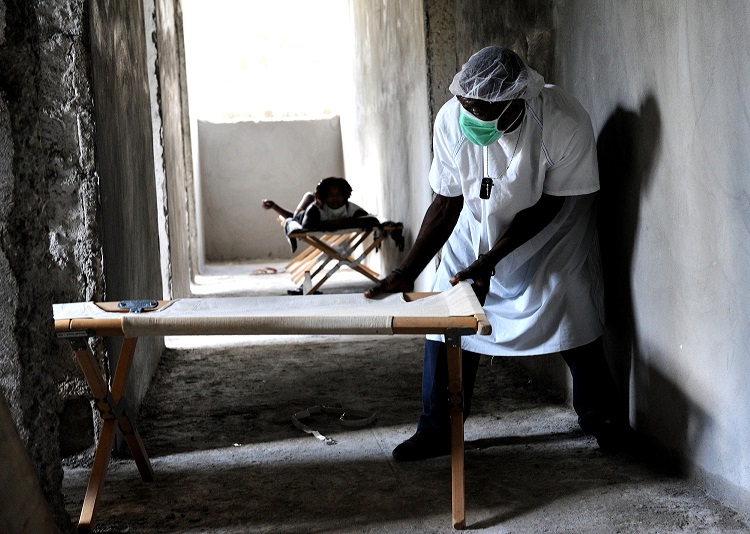It was detected for the first time in 1970, in a nine-year-old boy in the Democratic Republic of Congo, in a region where the virus had been eradicated in 1968. Since then, the majority of cases have been found in rural regions of tropical forests in the Congo River basin, and increasingly across central and western Africa.
 Lourdes Pérez
Lourdes Pérez
The mpox virus (known until recently as monkeypox), a strange illness, is a zoonotic virus (a virus transmitted from animals to humans) which causes symptoms similar to those observed in virus patients in the past, though less serious.
This illness is endemic in Benin, Cameroon, the Central African Republic, the Democratic Republic of Congo, Gabon, the Ivory Coast, Liberia, Nigeria, the Republic of Congo, Sierra Leone and South Sudan.
With the eradication of the virus in 1980 around the world, and the subsequent cessation of vaccinations against this disease, mpox has become the most important orthopoxvirus for public health.
Mpox is transmitted to human beings from close contact with an infected person or animal, or with wounds, bodily fluids, respiratory droplets and contaminated material, such as bedding.
The clinical symptoms are usually fever, skin rashes and inflamed lymph nodes. It can cause a range of medical complications.
Data published by the World Health Organisation (WHO) shows there were 81,608 confirmed cases of mpox and 59 deaths reported in 100 countries up to the end of November.
According to this source, the majority of cases recorded in November come from the Americas (92.4%) and Europe (5.8%).

The 10 most affected countries globally are: the United States, Brazil, Spain, France, Colombia, the United Kingdom, Germany, Peru, Mexico and Canada. Together these countries represent 86% of the cases reported around the world.
Hepatitis
The WHO warned that the world is facing an outbreak of hepatitis of unknown origin, which affects children under 16 years of age. In the past few months, this situation has captured the paediatric attention of the whole world.
Several hypotheses have been considered, from the consequences of adenovirus to side-effects of infection by the SARS-CoV-2 virus which causes Covid-19. However, the fact is that exactly what causes it is still unknown. It all began on 5 April 2022, when the United Kingdom alerted the international community to a rise in this ailment in previously healthy children.
Since then, the figures have shot up and at the beginning of July there had been 1,010 reported cases, with countless liver transplants and 22 deaths in 35 countries. The most noted symptoms are general malaise, vomiting, fever, abdominal pain, jaundice (yellow colouring of the skin), diarrhoea, respiratory symptoms and rashes.
Old diseases
Among the illnesses re-emerging in 2022 are Ebola and cholera. Ebola was first detected in 1976 in a tiny village near the river of the same name as the country then known as Zaire, today called the Democratic Republic of Congo, and it was mainly recorded in different parts of Africa.
 The virus is passed to human beings from wild animals and spread through the population by person-to-person transmission. Outbreaks have a high mortality rate of approximately 50%.
The virus is passed to human beings from wild animals and spread through the population by person-to-person transmission. Outbreaks have a high mortality rate of approximately 50%.
The first symptoms of this serious infectious disease include: fever, intense pains in the head, throat, muscles and joints, as well as debilitating weakness, to which, at an advanced stage, they also experience diarrhoea, vomiting, stomach pain, unexplained bleeding and bruising.
One of the most recent outbreaks was noted in September in Uganda where, according to information from the Health Ministry in this African nation at the beginning of December, when the last known infected patient was discharged, 140 cases and 56 deaths had been confirmed. In terms of cholera, a diarrheal disease caused by the ingestion of food or water contaminated with the Vibrio cholerae bacteria, it continues to be a global threat to public health and an indicator of inequity and lack of social development.
The majority of those infected by this virus do not show symptoms; nevertheless, the bacteria is present in the faeces for 10 days following infection and returns to the environment, with the subsequent risk of infecting others.
Throughout the 19th century, cholera spread around the world from its original reservoir in the Ganges delta, in India, and later pandemics killed millions of people on every continent. Today it is endemic in many countries.
(Translated by Donna Davison – Email: donna_davison@hotmail.com) – Photos: Pixabay and Pixnio.












.jpg)












